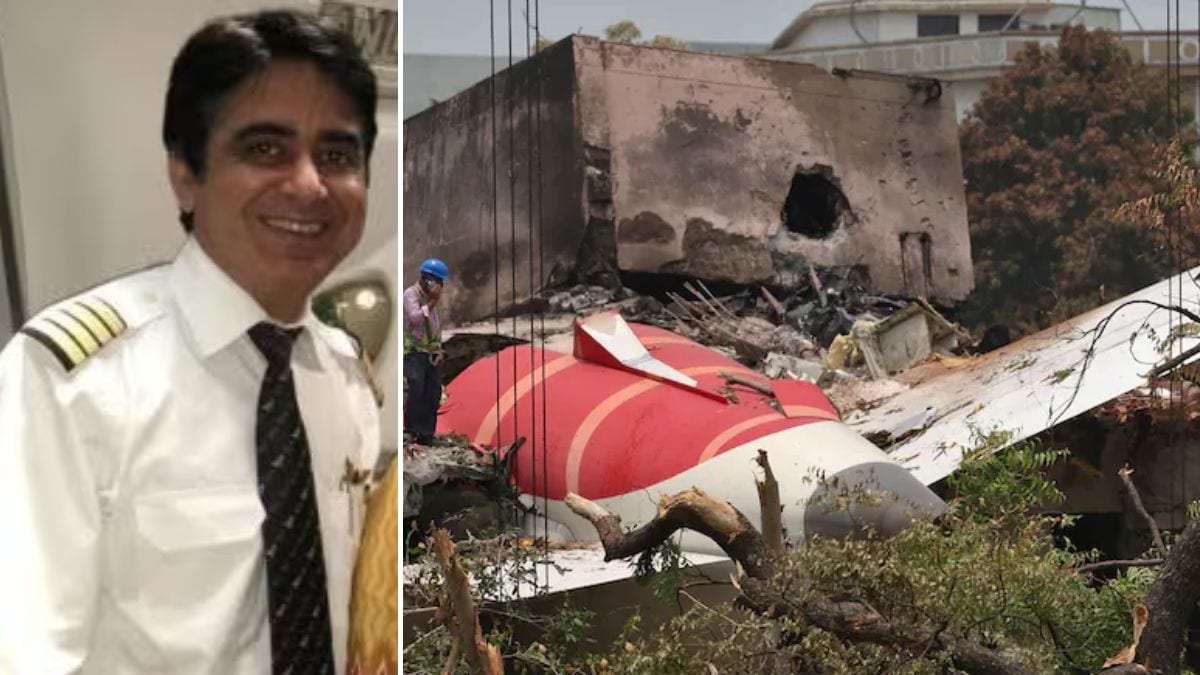
- Supreme Court says Air India Dreamliner pilot cannot be blamed for Ahmedabad crash
- Investigator reported fuel cutoff to both engines shortly after takeoff before the crash
- Experts indicate an electrical short circuit caused automatic engine fuel shutdown
The Supreme Court's comments today, which gave comfort to the father of the pilot-in-command of Air India's Boeing 787 Dreamliner that crashed in Ahmedabad, has brought the focus back on theories of electrical malfunction and other probable causes.
No one can blame the pilot of the Dreamliner for the crash in June that killed 260, the Supreme Court told the pilot's father today and sent notices to the Centre, the civil aviation regulator (DGCA), and the Aircraft Accident Investigation Bureau (AAIB).
The order came on a petition by Pushkaraj Sabharwal, whose son Sumeet Sabharwal was the pilot-in-command of the Boeing 787 Dreamliner, seeking an independent judicial probe into the crash. Justice Surya Kant, who heard the petition, told the 91-year-old grief-stricken father of the late pilot, "This crash was extremely unfortunate, but you should not carry this burden that your son is being blamed."
The AAIB in its preliminary report released in July said fuel supply to both engines was cut off shortly after takeoff. The two fuel control switches were moved to the "cutoff" position in quick succession; although the switches were turned back on about 10 seconds later, the engines had already flamed out, leading to the crash, the report said.

The court's observations come at a time when there are credible theories from experienced aviation experts pointing to the possibility of a massive electrical short circuit caused by water ingestion in one of the bays of the Boeing 787.
This, the theories suggest, resulted in a cascading set of failures causing the logic in the aircraft's systems to shut down fuel flow to the engines of the Dreamliner as a safety feature, albeit one that eventually resulted in the crash of the aircraft - since there was no time, altitude or airspeed for the engines to spool up to maximum thrust once the engines restarted, which they did.
Now, in the absence of a detailed crash report or any further statements from the AAIB, more theories have emerged.
1. Air India flight AI-171 was brought down by the deliberate action of one of the pilots, one theory says. This is based on the sentence fragment revealed in the preliminary report - "the aircraft achieved the maximum recorded airspeed of 180 knots IAS at about 08:08:42 UTC and immediately thereafter, the Engine 1 and Engine 2 fuel cutoff switches transitioned from RUN to CUTOFF position one after another with a time gap of 01 sec." The cockpit voice recorder audio captures one pilot asking the other, "Why did you cut-off?" and the reply, "I did not do so."
2. The US Federal Aviation Administration's (FAA) Bryan Bedford told Reuters, "We can say with a high level of confidence it doesn't appear to be a mechanical issue with the Boeing fuel control unit. We feel very comfortable that this isn't an issue with inadvertent manipulation of fuel control."
3. No international regulator has called for Boeing 787 Dreamliners to be grounded because of electrical or mechanical issues.

4. Multiple independent accounts back this report - including a report in the leading Italian daily Corriere Della Sera which alleged the 'pilot flying' (the co-pilot in the case of AI-171) repeatedly asked Captain Sabharwal (the non-flying pilot-in-command) why he switched off the engines. According to the report, the pilot flying the aircraft "was unconvinced and asked the same question several more times, for another six seconds."
5. This is more information than the AAIB's preliminary crash report states and indicates that the entire recording, transcript or technical data of the entire duration of the flight exists with multiple international agencies. This was expected since there were several international stakeholders who have been a part of the investigation.
6. An independent report by aviation expert Richard Godfrey stated, "The dual engine shutdown to below idle was caused by water ingress to the Aft E/E Bay." His report goes on to mention: "The engines automatically reduce to idle when a temporary fault occurs in the digital link between the aircraft's central computer (CCR) and the engine electronic control (EEC) systems. This link carries the thrust lever position information, known as the thrust resolver angle (TRA), which tells each engine how much power the pilots are demanding. When that information is lost, the engine control systems automatically set both engines to idle as a protective measure. Once the connection is restored and valid data is received again, the systems automatically attempt to restart the engines."
7. The Federation of Indian Pilots (FIP) has asked the government to check all Boeing 787 in the country thoroughly for electrical systems faults, following recurrent electrical issues with the aircraft.
In summary, the outcome of this highly emotive case needs to be looked at dispassionately. It is critical for the AAIB to produce its report quickly and credibly - this cannot extend month after month.
Track Latest News Live on NDTV.com and get news updates from India and around the world

